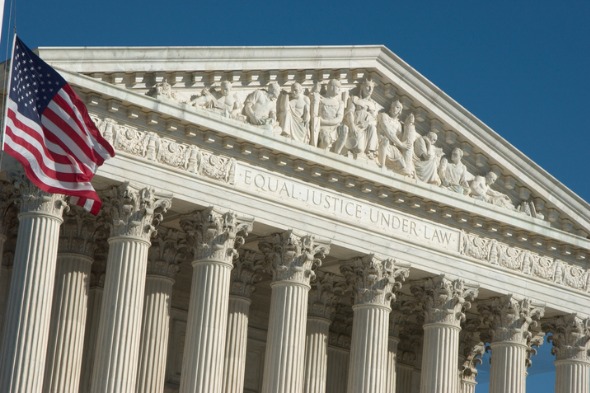In early June of 2023, the United States Supreme Court (“SCOTUS”) issued an opinion that effectively held that when a company begins trading on a public exchange via a direct listing, instead of via an initial public offering, investors may no longer be afforded protections under Section 11 of the Securities Act of 1933, which has long offered investors in new issuances heighted protections. (A copy of the opinion is available here: link.)
This article seeks to briefly describe the protections historically available to investors in newly issued shares and explain why the Supreme Court’s decision may effectively eviscerate those protections.
Heightened Investor Protections for New Issuances Going Back to the 1930s
The stock market crash beginning in 1929 that set off the Great Depression in the United States made it apparent that much of the information that had been provided to the investors regarding stocks traded on public exchanges was either wildly hyped or outright fraudulent. In the wake of that crash, Congress passed a series of laws that explicitly required companies to provide meaningful and truthful disclosures to investors regarding the performance of their companies. Furthermore, Congress determined that new issuances, i.e., companies without a track record of performance on a public exchange, presented heightened risks for fraud and investor exploitation. And yet, new issuances were viewed as an important part of promoting innovation and strengthening the US economy, so regulations especially needed to ensure that investors could be confident they could participate in new issuances. So, the Securities Act of 1933 put into place especially tight protections for investors in connection with new listings of shares on publicly traded exchanges.
At the time of the Securities Act of 1933, essentially all new listings of shares on publicly traded exchanges were accomplished by way of a process known as an initial public offering, or “IPO”. In an IPO, a company works with an investment bank that acts as an underwriter. The investment bank organizes a syndicate of initial investors that purchase the new shares being issued and immediately begin trading them following the IPO.
The “Lock Up”
In an IPO, the investment bank typically requires that any persons or entities that held shares prior to the IPO, such as venture capitalists or executives and employees of the company, be prohibited from selling their shares into the market for a period of time immediately following the IPO. This period of time is known as the “lock up” period. The lock up period ensures that the public exchange will not be flooded with a large number of insiders’ shares just as the company begins to trade publicly for the first time. Lock up periods are typically between 90 and 180 days.

Section 11’s Protections
Pursuant to Section 11 of the Securities Act of 1933, when a company makes its shares available for trading on a public exchange via an IPO, it must file a registration statement with the US Securities and Exchange Commission (“SEC”), which the SEC makes public to investors. The registration statement will include the company’s prospectus associated with the IPO, which contains lots of information useful to investors in determining whether to invest in the newly publicly tradeable company, including financial statements, a description of the business and other relevant information.
Importantly, shares that are issued in connection with the IPO are covered by the registration statement, but those that were issued to insiders prior to the IPO generally are not.
Section 11’s tight protections for investors in newly traded shares include provisions for: 1) the company’s strict liability for drops in stock prices due to materially false information in the registration or prospectus. This means that an investor seeking to recover on losses following an IPO need only prove that the registration statement or prospectus contained materially false information and not that the company intended to include the false information. The company does have the opportunity to defend itself by proving that the materially false information did not lead to the stock drop, but the burden is on the company to do so; 2) underwriter liability for drops in stock price due to materially false information in the registration or prospectus. This means that if the company cannot afford to cover the investors’ losses, the investor can seek damages from the investment bank that assisted the company in undergoing the IPO, and 3) a statutory damages calculation. This means that, essentially, successful investors have the right to receive the entirety of the difference between their purchase price and sale price without further calculation of what part of the stock price might be attributable to the misinformation in the registration or prospectus.
Other securities laws passed by Congress in the 1930s do provide protection for investors against misinformation from the company at times other than around a new listing. The Securities Exchange Act of 1934, passed one year after the Securities Act of 1933, and regulations generated under its authority, provide investors protections against false or manipulative information published by the company that affects stock prices not in connection with a new listing, but they do not provide Section 11’s three specific protections and are thus not as protective as Section 11.
The “Tracing” Requirement
In order to obtain Section 11’s protections, investors have historically been required to show that the shares they purchases were, in fact, issued pursuant a registration statement. This is known as the “tracing” requirement. In 1933, this was a relatively easy exercise. At that time, share purchases typically resulted in an exchange of physical paper share certificates. Every share purchased by an investor, even where the purchase occurred on a public exchange, could be tied back to a specific paper certificate. But, over time, shares began to be issued exclusively in electronic book-entry form. Then, shares began to be held by beneficial owners only in “street name”, meaning that large institutions such as broker dealers held shares in their own name while simply tracking internally which of their clients had beneficial rights to the shares. Because of these changes, shares became more and more fungible. Then, institutional broker dealer practices, such as allowing different clients to own fractional shares or pro rata interests in bulk blocks of shares of a company and facilitating internal exchanges among customers, only increased the difficulty of tying any particular shareholder’s ownership to specific shares issued by the company at a specific point in time.

Thankfully for investors, as shares became more fungible, investors seeking damages for share price drops due to false information in a registration or prospectus were still able to meet the tracing requirement because the underwriter’s enforcement of a lock up period meant that all shares purchased prior to the expiration of the lock up period were shares covered by the registration statement. No other shares were permitted to trade during that time, so no actual “tracing” of an investor’s shares to specific shares issued was required. Thus, investors who purchased stock following an IPO but prior to the expiration of the lock up period were still able to meet the tracing requirement and benefit from the protections of Section 11 of the Securities Act of 1933.
Direct Listing Circumvent Section 11’s Investor Protections
However, in recent years, some companies began trading on public exchanges via a “direct listing” instead of via an IPO. In a direct listing, rather than undergo the expense of hiring an investment bank to act as an underwriter, a company immediately allows insiders to begin selling shares via a public exchange. Initially, companies that began allowing shares to trade on public exchanges via direct listings could not sell new shares and raise money in connection with the direct listing, but more recently, all major stock exchanges have allowed companies to issue new shares and raise money in connection with direct listings.
While the purpose of direct listings initially related to reducing underwriting expenses, they had a side effect. They did not involve any lock up period, so where the company was issuing new shares or was otherwise was required to issue certain shares pursuant to a registration statement along with those it was allowing exempt insiders to sell into the market, purchasers of shares in the immediate aftermarket of the issuance could not know whether they were purchasing new shares subject to a registration statement or shares that had previously been held by insiders that were not subject to a registration statement. This meant that, essentially, no purchasers of the newly traded shares could meet the “tracing requirement” as required in order to benefit from the protections afforded to investors by Section 11 of the Securities Act of 1933.
The Supreme Court Fails to Protect Investors Citing Textual Analysis
In one such case, Slack Technologies, LLC (“Slack”) went public via a direct listing in June of 2019. Slack issued 165 million shares subject to a registration statement, and, simultaneously, Slack allowed 118 million of previously existing shares to be immediately tradeable on the exchange along with those shares without being subject to a registration statement. Slack’s share price quickly traded as high as USD 38.62, but then dropped to as low as USD 20.13 by November of that year. Following the price drop, certain investors brought suits under Section 11 of the Securities Act of 1933 alleging, among other things, that Slack had failed to disclose information about service disruptions and how it compensated customers for those disruptions. The plaintiffs argued before the courts that Section 11 should not be interpreted to impose a tracing requirement where registered shares were made tradeable simultaneously with unregistered shares because such an interpretation would render Section 11 wholly ineffective in protecting investors in connection with a new issuance. The registration statement and heightened liability for misstatements therein would not apply because investors would not be able to determine which type of shares they had purchased. The federal district court and the United States Court of Appeals for the Ninth Circuit agreed with the plaintiffs and imposed liability on Slack.

Slack appealed the case to the United States Supreme Court, and, on 1 June 2023, the Supreme Court handed down its ruling overturning the lower courts’ rulings and imposing the tracing requirement, notwithstanding the fact that there was no way the tracing requirement could possibly be met because it was a direct listing where both registered and unregistered shares begin trading simultaneously. Even while acknowledging the ambiguity in the wording of the statute, the Court based its opinion on a textual analysis of the statute without meaningful policy consideration. The Court’s opinion described its ruling as merely upholding the status quo, i.e., the applicability of the tracing requirement, and waived off concerns about the loss of an effective investor protection by stating,
“Naturally, Congress remains free to revise the securities laws at any time, whether to address the rise of direct listings or any other development. Our only function lies in discerning and applying the law as we find it.”
The Court’s Opinion Invites Gamesmanship, Leaving Investors in New Issuances Exposed
Troublingly, this opinion will almost certainly invite gamesmanship from companies seeking to go public. Direct listings may become more popular for reasons not related to saving on underwriters’ fees. And even where there is an underwriter involved, companies and underwriters may conspire to make a minimal number of shares exempt from the lock up requirements so as to make meeting the tracing requirement impossible for investors, thus effectively wiping out their heightened liability under Section 11 for new issuances.
Thus, while the Supreme Court opinion styles itself as merely preserving the status quo, the reality is that direct listings are a relatively new phenomenon, and the opinion may usher in changes that are decidedly not favorable for investors or markets. And, of course, Congress technically can move to protect investors at any time, but the practical reality is that Congress is deadlocked and is unlikely to ever do so. This Supreme Court opinion makes clear that investors cannot hope that persuasive policy argument will get the court to pick up any of the “slack” (no pun intended). The value of an investor protection that has served markets well since the 1930s has been seriously called into question, and only time will tell what if it continues to offer any benefit whatsoever.





